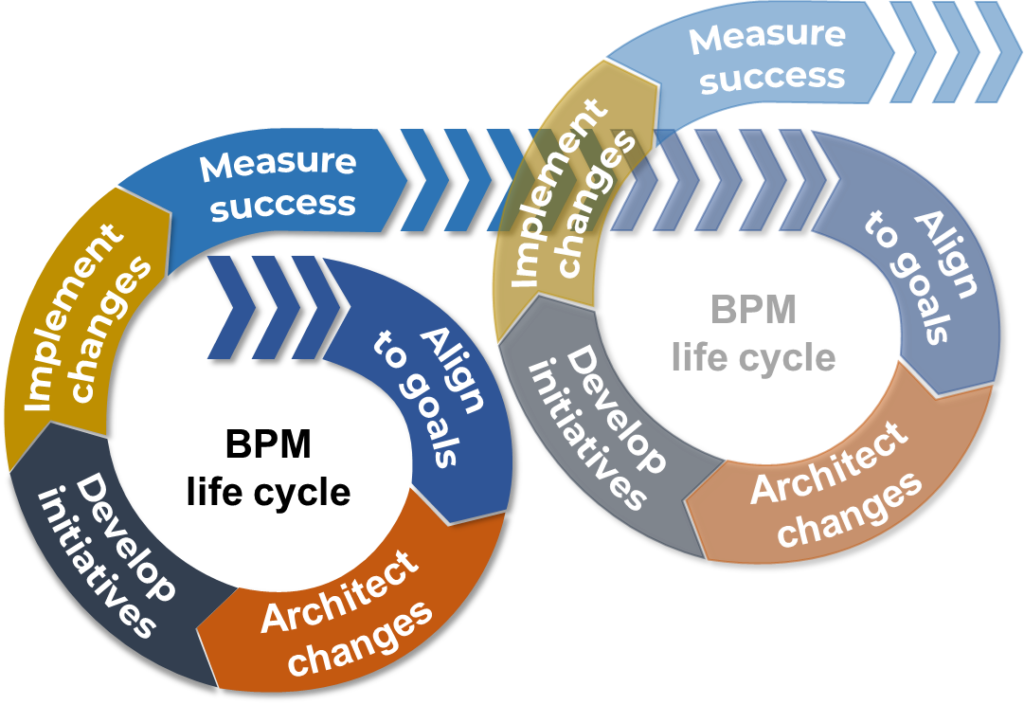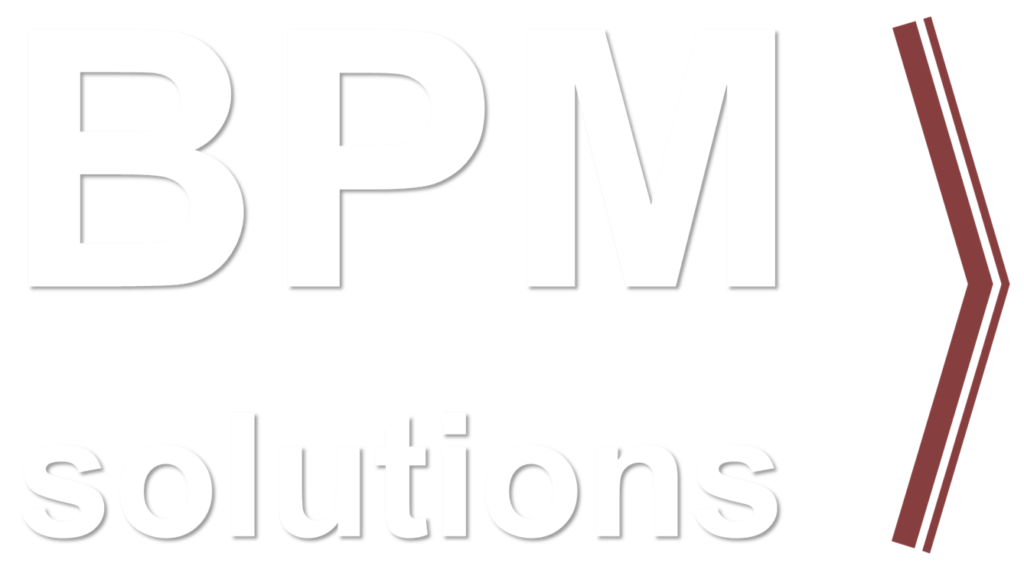BUSINESS PROCESS MANAGEMENT
is a systematic approach encompassing the identification, design, execution, documentation, and control of business processes—whether automated or manual. Aligned with organizational goals, BPM ensures consistent and targeted results.
“BPM CBOK“
BPM Life cycle
To facilitate effective process management, the Association of Business Process Management Professionals (ABPMP) has introduced the Business Process Management (BPM) life cycle, a structured framework.
Our BPM consultancy engages deliberate and collaborative efforts, leveraging technology to define, improve, innovate, and holistically manage end-to-end processes. This strategic approach enables businesses to achieve results, deliver substantial value to customers, and flexibly meet objectives.

The BPM life cycle model is designed to systematize the management of business processes. It is a pervasive element within successful enterprises, including Fortune 500 companies. A careful examination of operational activities in thriving organizations often reveals the incorporation of this model.
Successful organizations tend to safeguard the strategic nuances embedded in the BPM life cycle model, utilizing them discreetly to gain a competitive edge in their operational activities.
The BPM life cycle model, inherently simple, is remarkably effective. Its prevalence underscores its utility as a tool employed by organizations committed to operational excellence
Phase 1: Aligning Processes with Organizational Goals
In the initial phase, the focus is on outlining the objectives of organizational change.
This involves a thorough assessment to identify organization’s strategic goals.
Subsequently, the organization’s value chain is established, encompassing a meticulous segmentation of processes specific to the industry.
Processes are then categorized based on their impact on organization’s strategic objectives and goals, with a keen emphasis on those that has significantl influence on them — these processes are recognized as priority for change.
Key outcomes:
– strategic goals
– value chain
– processes segmentation


Phase 2: Architect changes
During this phase, changes to priority processes are designed or redesigned to achieve organizaion’s strategic objectives and goals.
This entails the comprehensive modeling of these processes using BPMN 2.0 notation, providing a visual representation in detail (“as-is” visualization).
Following the visualization of current processes, an in-depth analysis is conducted to ascertain their alignment with the company’s strategic goals and operational efficiency.
The target state of these priority processes, known as “to-be,” is then formulated.
Simultaneously, a prioritized list of initiatives is developed to facilitate the transition of “as-is” processes to the envisaged “to-be” target state. Here also the calculation of planned economic effect from initiatie implementation on organization’s strategic Key Performance Indicators (KPIs) is provided.
KPIs are established to monitor the success of this transition, aligning with the overarching strategic goals.
Key outcomes:
– process maps “as-is”
– process analysis
– initiatives to improve processes
– target process maps “to-be”
– planned economic effect with KPI’s
Phase 3: Develop initiatives
In the subsequent phase, detailed plans for implementing the identified initiatives are developed. These plans encompass three critical components:
1.Strategic measures regarding people, encompassing training, motivation, organizational structural adjustments, and alterations to job descriptions. These measures ensure the seamless implementation of changes in the priority process, facilitating a smooth transition to the target state (“to-be”).
2.Proactive measures addressing processes, including modifications to related processes and regulatory documents. These changes are integral to the successful implementation of initiatives, guiding the priority process toward the target state.
3.Strategic measures related to technology (equipment and IT) are outlined to ensure the successful implementation of changes within the initiative. This guarantees a seamless transition of the priority process to the target state.
Key outcomes:
– plan to execute initiatives that changes processes from “as-is” to “to-be”


Phase 4: Implement changes
In the fourth phase, under the careful guidance of project manager with active involvement of change management manager, the plans developed in Phase 3 are executed. Here a key role also play the process owner and other stakeholders which are affected by changes in the process.
All changes to processes are executed according to more detailed plans, incorporating all necessary steps and dependencies on other initiatives.
Key outcomes:
– implemented changes in process
Phase 5: Evaluation of Results
The final phase of t he BPM life cycle commences after the completion of development and implementation of process changes initiatives.
The organization assesses the success of the BPM initiative through:
- Measurement of economic effect on organization’s strategic KPIs
- Monitoring of process efficiency through process KPIs
- Establishment of process documentation management
- Implementation of a continuous process improvement system
During this phase, the economic effect of the changes is realized, and the actual results are compared against the targeted KPIs of initiatives and processes outlined in the Phase 2.
The organization introduces an ongoing Enterprise Process Management (EPM) model and process regulation, incorporating continuous measurement and monitoring of business processes and information systems.
All plans related to business processes, change management, economic effect, and information technology implementation are thoroughly archived.
Upon completion of the implementation project, the process owner assumes responsibility for the continual improvement of the changed process.
Key outcomes:
– developing BPM competence center
– implementing continuous process improvement system

Ready to Transform Your Business?
Whether you’re looking for expert consulting or comprehensive training, BPM Solutions is here for you.
Connect with us to discuss your unique needs and embark on a journey of business transformation.
